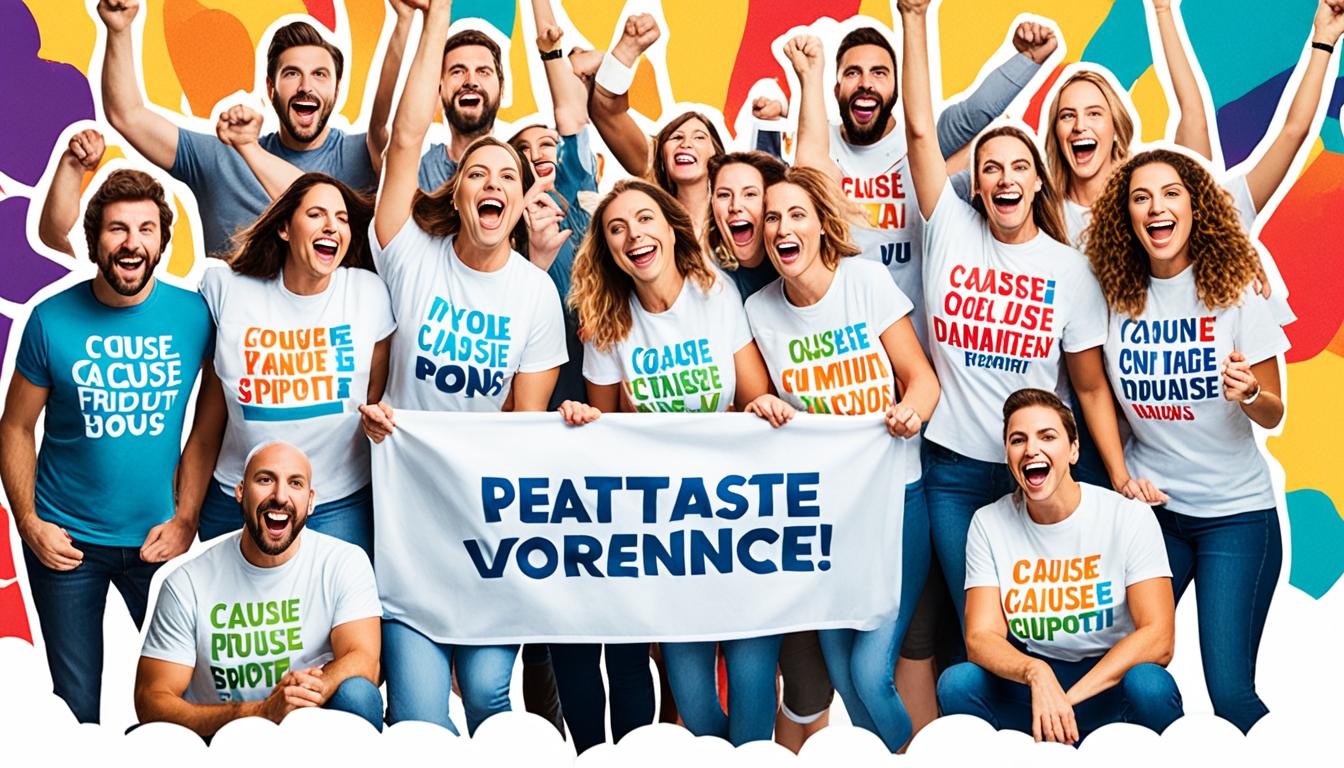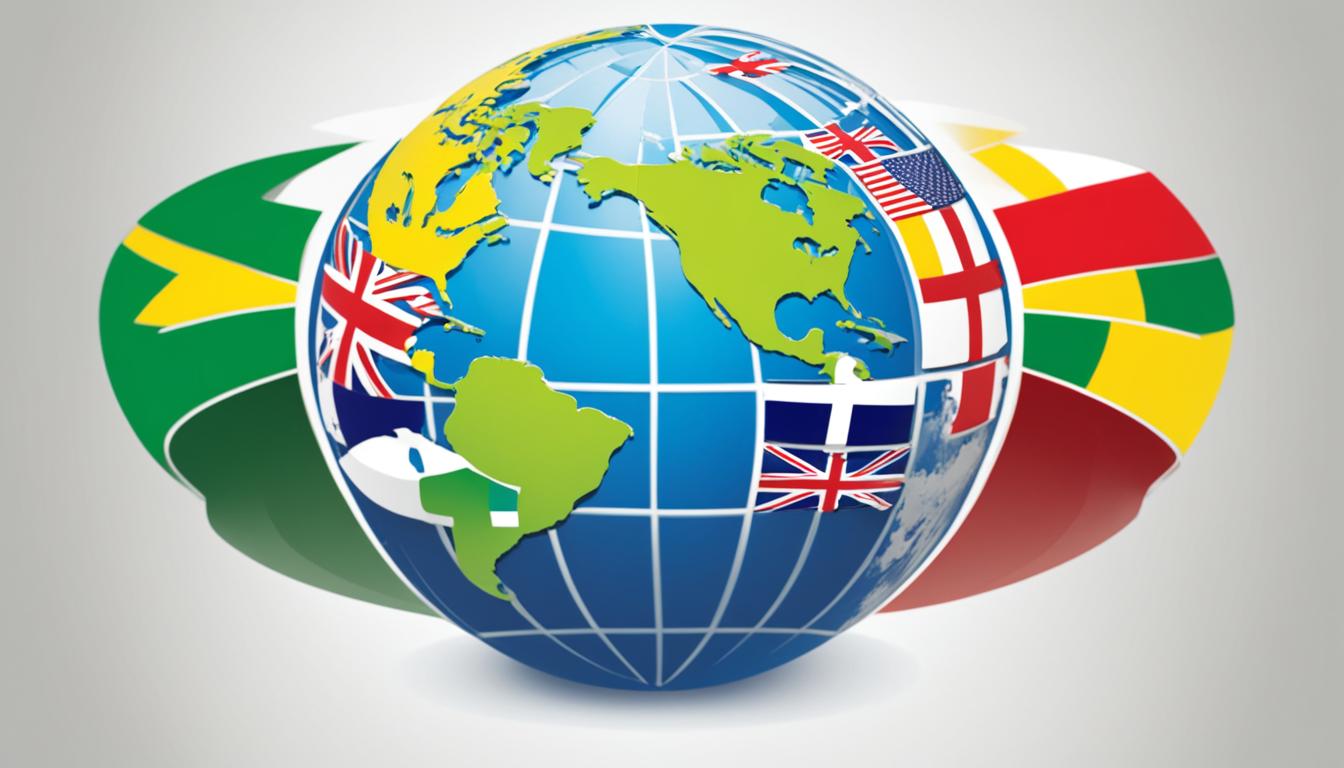Individual marketing is about creating ads and content just for you, using what they know about your likes and where you live. It uses digital technology to make ads and messages that fit exactly what you’re interested in. Companies want to make shopping feel special for each person, to keep customers coming back, have them more involved, and spend wisely on ads.
This way of marketing is getting more popular. That’s because businesses want to make your shopping experience feel like it’s made just for you. They also want to stand out by connecting with you directly.
Key Takeaways:
- Individual marketing, also known as one-to-one marketing or personalized marketing, tailors marketing campaigns to individual consumers based on their interests and demographics.
- By leveraging data and digital technology, individual marketing aims to improve customer loyalty, increase engagement, and achieve a higher return on marketing investment.
- Companies use individual marketing strategies to provide personalized experiences, connect with customers on a personal level, and differentiate themselves in a competitive market.
- Examples of individual marketing include personalized emails, customized advertising, and unique product offerings.
- Implementing individual marketing requires building and maintaining customer databases, interacting with customers to gather feedback, and customizing products, services, and messages.
What is One-to-One Marketing?
One-to-one marketing, or 1:1 marketing, focuses on crafting unique experiences for each customer. It changes how we communicate with customers to make them more loyal. This means creating ads, messages, and content that feel specially made for each person. This idea has been around for a long time. But now, with new technology, companies can really make it happen. They aim to make every customer feel special. This leads to happier customers who stick around longer.
For one-to-one marketing to work, companies must really understand their customers. They use data to learn what customers like and don’t like. With this knowledge, they create marketing that feels personal. This approach reaches customers in a meaningful way. It helps build strong relationships and keeps them coming back.
Technology plays a big role in making marketing personal. Companies use digital tools to customize how they talk to customers. This includes personalized emails and ads that speak directly to you. By doing this, they make the customer’s experience better. This helps the brand and can increase sales.
Yet, this strategy isn’t just for the online world. It works offline too. Companies can create special experiences in the real world. This could be through mail that has your name on it or one-of-a-kind experiences. These efforts make customers feel valued and remembered.
To wrap it up, one-to-one marketing is a strong way to connect with customers. It’s about making each customer’s experience feel like it’s just for them. With the right data and tools, companies can send the right message. This makes customers feel important and strengthens their connection to the brand.
One-to-One Video Marketing
One-to-one video marketing is a fresh way to connect with customers. It uses data to make videos that speak directly to each person. This method lets businesses craft unique videos for each customer, reflecting their tastes and actions. It’s automated, which means no more manual work, and it scales up easily.
Vedia, a top tech marketer, is really into this. They use data to create ads and videos that feel personal. This tech helps companies make video content that truly engages their audience.
This kind of marketing helps businesses really get their message to the right people. They use what they know about their customers to hit the mark every time. It makes their marketing work better, by making sure they’re talking directly to what their customers want and need.
Benefits of One-to-One Video Marketing
Let’s look at what makes one-to-one video marketing so good:
- Personalized Videos: This approach lets businesses make videos specially for each customer. They tap into what each person likes and does, leading to a more gripping watch.
- Contextual Data: It’s all about using data to get things right. By understanding each customer, businesses can make videos that are spot on in terms of interest and relevance.
- Increased Engagement: Since these videos are so aligned with what customers like and need, they’re more likely to watch and stay interested. This can make the whole viewing experience more exciting and engaging.
- Improved Conversion Rates: With videos that are this tailored, companies can really nudge customers towards taking action. It’s a smart way to boost the chances of getting the results they want.
- Enhanced Customer Satisfaction: Custom videos make customers feel special and understood. This can make them happier with the brand, leading to stronger loyalty and connection.
Adopting one-to-one video marketing can boost a company’s reach in a big way. By using data smartly and crafting personalized videos, businesses can grab their customers’ attention better, making them more likely to engage and convert.
How to Start a One-to-One Marketing Initiative
Starting a one-to-one marketing initiative is about taking key steps. By doing so, businesses can build personalized marketing strategies. These strategies boost customer happiness and involvement.
1. Build and Maintain a Comprehensive Customer Database
A rich customer database is at the heart of one-to-one marketing. It includes details from all interactions, like website visits, purchases, and feedback. This data offers deep insights into what customers like and do. With it, companies can craft marketing efforts that truly speak to each customer.
2. Foster Customer Interaction and Gather Feedback
Talking to customers and getting their feedback is critical. By connecting through surveys, social media, and support chats, businesses learn about customer wants and needs. This knowledge helps improve products and services. Plus, it makes customer relationships stronger.
3. Differentiate Customers and Segment Them
After gathering customer info, businesses should recognize each customer’s unique traits. This makes effective segmentation possible. With it, businesses can send messages and offers that really matter to each customer. Putting customers into distinct groups boosts the power of marketing efforts.
4. Customize Products, Services, and Messages
Customization is important for one-to-one marketing success. It means tailoring products, services, and messages for each customer. This might mean suggesting products, offering special deals, or sending unique messages based on what each customer likes. The goal is to give every customer a special experience that builds loyalty.
By taking these steps, companies can start a one-to-one marketing campaign that uses customer data well, improves talks with customers, allows for differentiation, and brings customization. This strategy increases customer satisfaction and activity, helping the business grow.
| Key Steps | Benefits |
|---|---|
| Build and Maintain a Comprehensive Customer Database | – Enhanced insights into customer preferences and behaviors – Enables targeted and personalized marketing efforts |
| Foster Customer Interaction and Gather Feedback | – Better understanding of individual customer needs and preferences – Strengthened customer relationships |
| Differentiate Customers and Segment Them | – Tailored messages and offers that meet specific customer needs – Increased effectiveness of marketing efforts |
| Customize Products, Services, and Messages | – Personalized experiences that foster customer loyalty and engagement – Higher customer satisfaction |
Can One-To-One Marketing Improve My Business?
One-to-one marketing can greatly boost your business. Personalized marketing could make customer spending leap by up to 500%.
It’s all about sending the right messages to your customers. Knowing what they like helps you create offers that speak to them. This leads to loyal customers and more sales.
This strategy cuts down on advertising costs. You can reach out directly to customers through targeted emails or ads. This means no extra spending.
People prefer shopping with brands that get them. Studies say personalized offers make customers more likely to buy. Emails tailored just for them get opened more too.
With real-time updates and data on behavior, you can guess what customers will want next. This makes their shopping experience better. Happy customers tend to buy more based on their interests.
| Benefits of One-To-One Marketing: |
|---|
| Increased customer spending by up to 500% |
| Direct communication with customers |
| Lower cost of resources |
| Higher customer loyalty |
| Improved customer satisfaction |
Going for a one-to-one marketing plan can change your business. It makes customers more involved. This lifts sales and puts your brand on top.
Case Study: XYZ Retail
XYZ Retail upgraded their business with one-to-one marketing. They checked customer data and understood what different customers liked. This let them recommend the right products.
This move grew customer spending by 30% and built stronger loyalty. Personal messages and ads helped connect better with customers. Sales and happiness went up.
The use of real-time personalization helped them predict customer needs. This improved shopping experiences. It also encouraged customers to buy more often.
XYZ Retail’s story shows how valuable one-to-one marketing is. By using customer data and creating personal touches, you can boost engagement and sales in your business too.
Improvements through One-To-One Marketing
One-to-one marketing strategies make a big difference in marketing outcomes. Personalized efforts increase sales and improve marketing efforts overall. By focusing on individuals, businesses can make their marketing more powerful.
Pay-Per-Click Campaign Optimization
One-to-one marketing enhances pay-per-click (PPC) campaigns. Companies can tailor ads to fit what customers want. By knowing who their customers are, they can create ads that get more clicks and sales.
Retargeting for Increased Conversion Rates
Retargeting is key in one-to-one marketing. It helps businesses connect again with visitors who didn’t buy anything. Personalized ads push these potential buyers to make a purchase, boosting sales. This increases the success of marketing investments.
Maximizing Social Media Impact
Social media is great for one-to-one marketing. Companies can target ads to specific groups based on their interests and behaviors. This ensures ads reach the right people, making social media more effective.
Creating Customized Website Experiences
One-to-one marketing lets companies create websites that visitors want to come back to. By adapting the content for each visitor, companies make their website more appealing. This approach leads to more sales and revenue.
Personalized Email Marketing Campaigns
Email marketing is very effective with one-to-one marketing. Platforms like MailChimp, Marketo, and HubSpot let businesses send customized emails. These emails are more relevant to each customer, leading to better results.
Examples of One-To-One Marketing
One-to-one marketing is more than a concept. Many industries have seen its success. Here are some ways top companies have applied it:
Example 1: Personalized Emails by Grammarly
Grammarly sends personalized emails to users. These emails offer insights and tips based on the user’s own writing. Grammarly’s approach helps users write better by offering individual recommendations.
Example 2: Personalized Music Playlist by Spotify
Spotify generates personalized music playlists. These are based on what the user likes to listen to. This makes Spotify more engaging by offering a unique listening experience.
Example 3: Personalized Bottles by Coca-Cola
Coca-Cola put popular names on their bottles in the “Share a Coke” campaign. This approach made young adults more interested in the brand. It turned a common product into something personal, sparking conversations.
These examples show that one-to-one marketing works in various settings. It proves personalized tactics make customers feel connected and loyal to a brand.
What is Marketing?
Marketing is how companies promote their products or services. It includes ads and different strategies to reach people. The aim of marketing is to make people aware, spark their interest, and get them to act. This could mean buying something, asking for info, or signing up. Marketing is about knowing what people need and want. It’s showing them why your product or service is unique. And it’s telling them why it’s worth their time and money. Through marketing, companies can connect with customers, make their brand known, and boost sales.
Marketing is key for any business plan. It helps companies show off their offerings to the right audience, at the right time, and in the best way. Good marketing strategies can create brand recognition. They can bring in new customers and keep the current ones happy. Marketing mixes advertising, promotions, and customer relationships.
Ads are a big part of marketing. They send persuasive messages about what’s being sold to potential buyers. Ads can be in newspapers, on TV, online, or on social media. Their goal is to catch people’s attention and show the perks of the product or service.
Promotions do more than just ads. They’re about making the brand more visible and getting people interested in buying. Sales deals, PR campaigns, sponsorships, events, and direct marketing are some ways to promote. Promotions aim to give the brand a good image and urge people to act.
Building relationships with customers is vital. It’s about creating and keeping strong ties. Knowing what customers like and how they behave lets companies personalize their marketing. This could mean having loyalty programs, tailored messages, top-notch customer service, and staying connected. Good relationships can lead to loyal customers and long-term success.
In summary, marketing involves advertising, promotions, and building customer relationships. It’s crucial for businesses to effectively push their products or services. It helps them engage with their audience and increase sales. Understanding and applying strong marketing strategies can make companies leaders in their market, maintain great customer relationships, and succeed over time.
What Are the 4 P’s of Marketing?
The 4 P’s of marketing form the core of a company’s marketing approach. They are known as the marketing mix. Let’s dive into what they entail.
- Product: The product is what a company offers its customers. It can be goods, services, or both. The key is that it answers the needs and wants of the target group.
- Price: Price is how much customers pay for the product or service. It needs to mirror the product’s worth and match what the market expects.
- Place: This is about how the product reaches the customer. It covers both physical spots and online spaces where people can buy the product.
- Promotion: Promotion means all the ways a company talks about its product to the audience. It includes ads, public relations, and sales promotions. The goal is to make people aware of the product, spark their interest, and convince them to buy it.
For a marketing strategy to work well, these four elements must fit together perfectly. This alignment ensures that it fulfills what customers want and need.
Conclusion
Individual marketing lets companies connect deeply with each customer. This approach uses personal info to tailor experiences, boosting loyalty and sales. It relies on digital tech to craft custom campaigns.
This type of marketing allows for messages and ads that speak directly to someone. It works well across many fields, proving its worth. Businesses see better results because their marketing fits each customer perfectly.
At its core, individual marketing builds strong bonds with customers. It makes companies stand out by offering something unique. Using customer data smartly, businesses can craft unforgettable experiences.
As people crave more personalized experiences, this marketing becomes key to business success. With these strategies, businesses can meet their customers’ changing needs. They stay ahead in the market this way.




